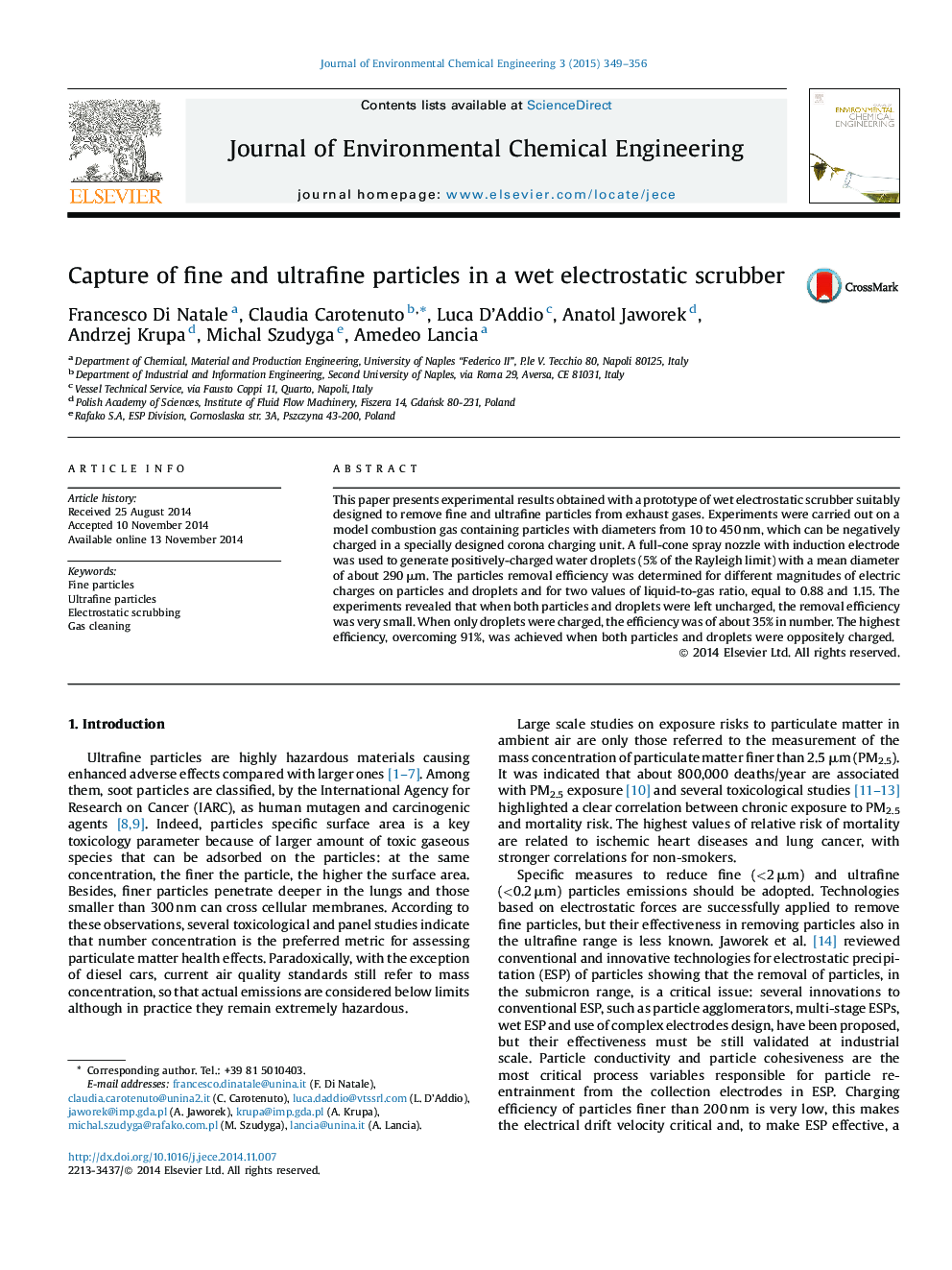| Article ID | Journal | Published Year | Pages | File Type |
|---|---|---|---|---|
| 222418 | Journal of Environmental Chemical Engineering | 2015 | 8 Pages |
•A prototype of electrified scrubber for fine/ultrafine particle removal was tested.•The efficacy of the electrostatic scrubbing was validated in laboratory conditions.•Optimal operating conditions are given by oppositely charged drops and particles.•Particles as fine as 15 nm were captured with an efficiency up to 80%.
This paper presents experimental results obtained with a prototype of wet electrostatic scrubber suitably designed to remove fine and ultrafine particles from exhaust gases. Experiments were carried out on a model combustion gas containing particles with diameters from 10 to 450 nm, which can be negatively charged in a specially designed corona charging unit. A full-cone spray nozzle with induction electrode was used to generate positively-charged water droplets (5% of the Rayleigh limit) with a mean diameter of about 290 μm. The particles removal efficiency was determined for different magnitudes of electric charges on particles and droplets and for two values of liquid-to-gas ratio, equal to 0.88 and 1.15. The experiments revealed that when both particles and droplets were left uncharged, the removal efficiency was very small. When only droplets were charged, the efficiency was of about 35% in number. The highest efficiency, overcoming 91%, was achieved when both particles and droplets were oppositely charged.
